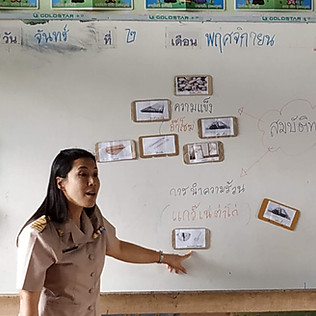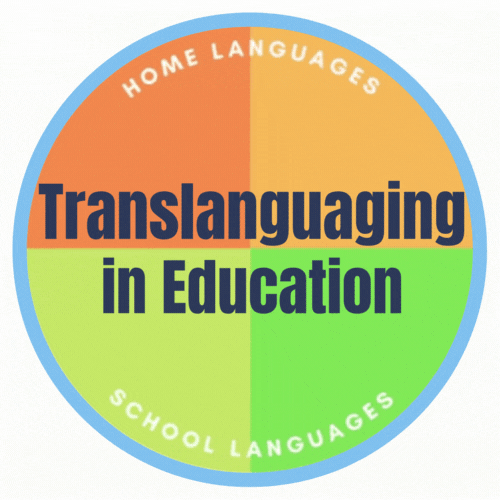
The Multilingual Classroom
There are schools where students from different language groups learn together in the same classroom. Teachers usually do not understand these students’ home languages and teach classes in the school language. Most of these students have a limited proficiency in the school language and do not understand the teachers’ instruction in the school language well enough. Therefore, students from a different home language background tend to perform worse and participate less than the students whose home language is the same as the school language. As migration and urbanization increase, this kind of linguistically diverse classrooms become more common.
What is Translanguaging?

Translanguaging is to freely use all of a person's language resources without concern to the boundaries between languages for bilinguals and between dialects for monolinguals, while appropriately adjusting the use of language resources according to the various and unique communicative contexts in order to bring information to full possible sense.
What is Translanguaging Pedagogy?

Translanguaging pedagogy is to leverage students' translanguaging with strategic flexibility for the learning of academic content and the development of language practices in various spoken and written forms that are appropriate for school context.
That is...
The translanguaging stance is acted out in a translanguaging unit plan of instruction and assessment designed according to students' translanguaging performances.
The implementation of unit design in class strengthens the development of content with literacy and oracy in both school and home languages, shifting along the students' translanguaging current while leveraging students' whole language resources in a strategic but flexible way by making use of various translanguaging strategies.
Where do we need Translanguaging Pedagogy?

in the Multilingual Classroom
for the Multilingual Students
While translanguaging pedagogy can be useful in any type of classroom, it could be utilized in a unique way in the multilingual classroom where students come from different home language backgrounds and study together in the same classroom.
The teacher could happen to be the speaker of one of the students' various languages but not all of their home languages. The teacher usually does not understand the students' home languages and thus uses the medium language of instruction, such as Thai in Thailand, in the classroom.
Translanguaging pedagogy is also specially designed to help multilingual students and students using a dialectal variety of a standard language to academically perform well, if their home language practice is different from the school language. Translanguaging pedagogy leverages these students' home languages and their individual multilingualism for better academic performance in school.

From Ethnolinguistic Minority Communities
Minority languages in a classroom may have different implications depending on where the classroom is located in our world.
Minority languages in the classroom of 1/3rd world are likely to be the majority languages in 2/3rds world. The minority languages in a classroom in New York City are Korean, Vietnamese, Thai, Spanish, etc., and these languages are are actually the national or official languages of different countries, such as Korea, Vietnam, Thailand, and many countries in Central and South America and Spain respectively.
Minority languages in a classroom in Thailand, however, are languages such as Karen, Hmong, Mon, Lahu, etc. The former kind of minority languages usually has enough reading materials even including electronic materials such as Google Translate and E-book, while the latter kind of minority languages usually has poor print materials and may not even have an alphabet developed yet. This difference related to material is just one of many differences between the two kinds of minority languages.
Through the implementation of translanguaging pedagogy, students may engage deeper and participate more in class with a clear understanding of instruction, perform at a higher level in assessment, and discover who they truly are. This is because through translanguaging strategies they can fully process new concepts and show their true knowledge and ability, utilizing their whole language resources rather than being presently forced to suppress a significant part of their language resources.
In addition to the positive impact on students, parents may engage deeper in their children’s school education when their children's home language is used as a resource in school as they are already experts in that home language. While learning and applying this new pedagogy, teachers may also gain a better sense of fulfillment as they see their students learn and perform better than they did before, and can co-build knowledge with their students as a co-learner in a more democratic classroom environment.

